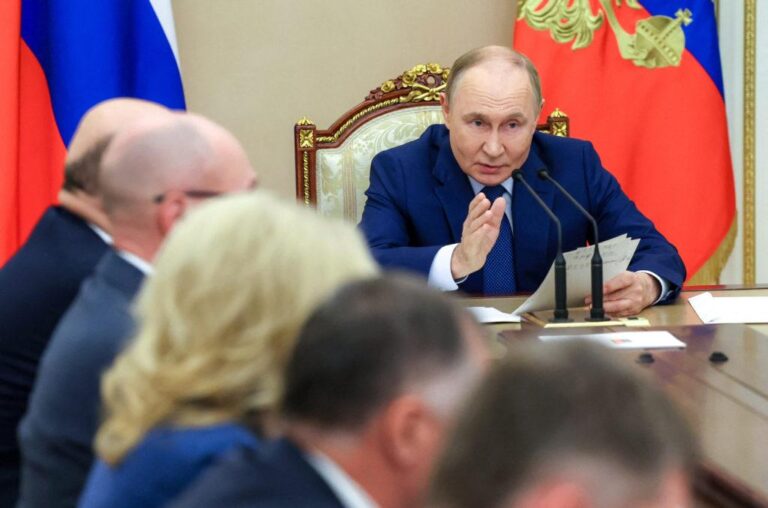Russia’s leading coal-producing region, Kuzbass, has revised its coal production outlook for 2025 downward, according to a recent report by Energies Media. The adjustment reflects shifting market dynamics and regulatory pressures impacting the coal industry amid a global transition toward cleaner energy sources. This development signals potential challenges ahead for one of Russia’s most important energy sectors as it navigates changing domestic and international demands.
Russia Revises Down Kuzbass Coal Production Forecast for 2025
Amid shifting economic priorities and environmental regulations, Russia has adjusted its forecast for coal output in the Kuzbass region for the year 2025. Recent statements from industry analysts suggest a notable reduction in projected production volumes, signaling a potential slowdown in one of the country’s key mining hubs. This revision comes as a response to evolving energy policies that emphasize cleaner alternatives and increasing operational challenges within the basin’s aging mines.
Key factors influencing the downward revision include:
- Rising extraction costs due to deeper and less accessible coal seams
- Heightened export market uncertainties amid global shifts away from coal
- Stricter adherence to environmental standards impacting mining activities
- Increased focus on renewable energy development within Russia’s strategic energy framework
| Year | Original Forecast (million tons) | Revised Forecast (million tons) |
|---|---|---|
| 2023 | 260 | 260 |
| 2024 | 270 | 265 |
| 2025 | 280 | 255 |
Economic and Environmental Factors Driving Reduced Coal Outlook
Recent shifts in global economic trends and environmental policies have significantly influenced Russia’s projections for Kuzbass coal production in 2025. A combination of weaker international demand, driven largely by transitioning energy markets, and enhanced regulatory pressures aimed at reducing carbon emissions, are at the heart of this revised forecast. Several countries’ commitments to greener energy sources continue to erode coal’s market share, urging producers to recalibrate output strategies. Additionally, fluctuating commodity prices and increasing operational costs in mining have also contributed to a more conservative production outlook.
Environmental factors weigh heavily on this reassessment, with the Russian government aligning its policies with global climate agreements. The drive toward cleaner energy is reflected in investments directed away from coal and toward renewables and natural gas. These dynamics are compounded by stricter environmental compliance requirements, including emissions controls and land rehabilitation obligations, which increase the cost and complexity of coal extraction. The table below summarizes key economic and environmental drivers impacting Kuzbass coal outlook:
| Factor | Impact on Kuzbass Coal Production 2025 |
|---|---|
| Global Demand Shift | Declining export markets, reduced consumption in major buyers |
| Regulatory Pressure | Stricter emissions standards, higher compliance costs |
| Operational Costs | Rising extraction and logistics expenses |
| Energy Transition | Increased competition from natural gas and renewables |
Experts Advise Diversification Strategies to Mitigate Regional Energy Risks
In light of recent adjustments to Russia’s Kuzbass coal production forecast for 2025, industry specialists are urging stakeholders to adopt comprehensive energy diversification strategies. The narrowed outlook highlights vulnerabilities within region-specific energy supplies, accelerating calls for broader resource portfolios. Experts emphasize that relying heavily on a single resource or geographic area may expose markets to unforeseen disruptions, price volatility, and geopolitical tensions.
Recommended diversification approaches include:
- Expanding renewable energy investments such as wind, solar, and hydro initiatives to reduce dependency on fossil fuels.
- Enhancing cross-border energy partnerships to secure alternative supply routes and improve market resilience.
- Developing advanced storage technologies to stabilize supply amidst fluctuating demand.
- Integrating smart grid systems that optimize energy distribution and reduce losses.
| Strategy | Benefit | Implementation Timeline |
|---|---|---|
| Renewables Expansion | Reduced carbon footprint and price stability | 3-5 years |
| Cross-border Partnerships | Supply security and market flexibility | 1-3 years |
| Storage Technologies | Improved energy reliability | 2-4 years |
| Smart Grid Integration | Optimized distribution & reduced losses | 3-6 years |
Key Takeaways
As Russia adjusts its forecast for Kuzbass coal production in 2025, the move reflects broader challenges facing the energy sector amid shifting domestic policies and global market dynamics. Stakeholders will be closely watching how these revisions influence both regional economies and international coal supply chains in the coming years. Energies Media will continue to monitor developments in this critical energy hub.




